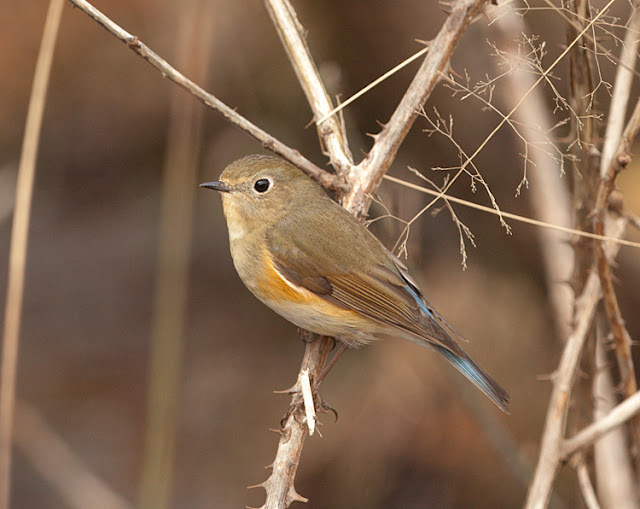Local Birding
To be honest, most of my birding this year has been local. The '5km from home' competition entered its second year and its been fantastic. My total last year was 114, this year I passed that by in the spring and am currently stuck on 129. I'd like to reach the nice round number of 130 but despite my efforts Lesser Redpoll, Woodcock and Crossbill have eluded me this year. However, it continues to throw out surprises and highlights such as Caspian Tern, Corncrake, Blue-headed Wagtail, Common Redstart, Ring Ouzel and Whinchat will ensure that I start all over again in 2022 with renewed vigour.
 |
| Caspian Tern, UEA Broad, 16th May 2021 |
 |
| Whinchat, West Earlham, 3rd May 2021 |
 |
| Blue-headed Wagtail, West Earlham, 1st May 2021 |
Nocmig
I was busy all year with Nocmig, from January until mid-November (check out my full update from earlier in the year). It was interesting to note the trends, what goes through and when. Personal highlights from my suburban garden included Cuckoo, Tree Pipit and Ring Ouzel.
Furthermore, I added Red Knot, Little Ringed Plover, Common Ringed Plover, Gadwall, Common Scoter and Little Owl to my garden nocmig list.
The Podcast
The Phil More's Corner Podcast is going from strength to strength. We recorded 13 episodes in 2021 and had a great time doing it. Its hard to pick out any one episode but for the sheer quality of the recordings he shared with us, our interview with Simon Elliott is the one that stood out for me!
2022
What's in store, I'm almost afraid to think! Hopefully less interruption from this damn pandemic. I have a spring trip lined up to Donegal for Golden Eagle and more Corncrakes. Any other trip after that in the spring is a bonus. I'll carry on with nocmig and will reset the clock on '5km from home' and start all over. I'll probably not bird the coast that much, I enjoy local birding instead and I associate driving with commuting/working and feel more and more uncomfortable with the idea of spending several hours in a car when I can walk out the front door and enjoy what's in front of me.
I'm also taking over from Colum Flynn as Irish Rare Birds Committee (IRBC) secretary. A hard act to follow but it'll be interesting to be involved and something I can only benefit from.
Otherwise, I just intend to continue enjoying my birding!










































